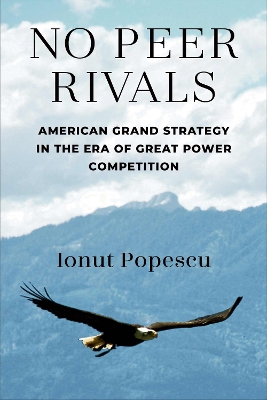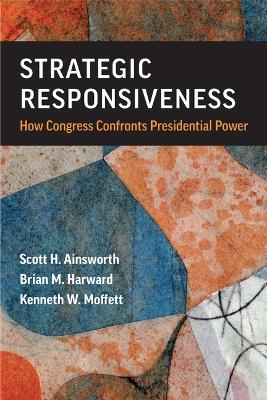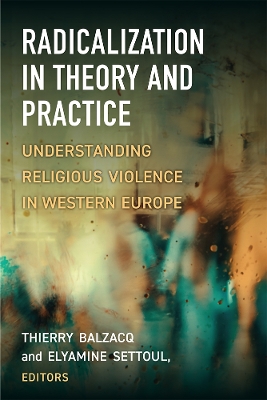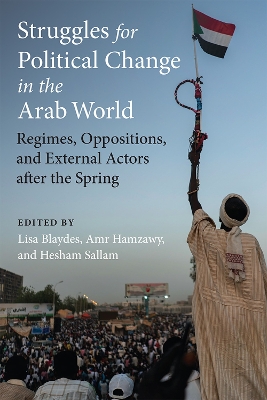First Nationalism Then Identity
 -15%
portes grátis
-15%
portes grátis
First Nationalism Then Identity
On Bosnian Muslims and Their Bosniak Identity
Krijestorac, Mirsad
The University of Michigan Press
09/2022
348
Mole
Inglês
9780472055500
15 a 20 dias
Descrição não disponível.
List of Figures
List of Tables
Abbreviations
Introduction
I: Nationalism, Nation, Maybe State ... And Identity: Theorizing Nationalism And Its Relation With A Group's Salient Idenity
A-1: Universal Particularism of Nationalism
A-2: Nationalism as Groupness
A-3: Power Relations as History of Nationalism
A-4: Types of Nationalism
A-5: Nationalism to overcome inertia in a motivation for a group change
A-6: Prescription for Imagining Nations
A-7: Social structure transformation
A-8: Case Study Selection
A-9: An argument for a bottom-up approach for a study of a case of nationalism
B: Defining And Disaggregating Salient Identity
B-2: Three levels of identity, individual, group and community of groups
B-2-2: Third level of response for group identity
II: A Short History Of Bosnian Muslim Groupness
2-1: Bosnian Muslims as a Distinct Group of the Bosnian Pot of People
2-2-1: Significant Early History of Bosnia and Its People
2-3: Bosnia's Ottoman Legacy
2-4: The Rise of Independent Bosnian Muslim Elites
III: The Three Pillars Of Bosnian Muslim Nationalism
3-1: Integrity of BiH as a Territory and an Entity
3-2: Islamic Foundation of Bosnian Muslims as a Separate Group
3-3: Theological Roots of Official Bosnian Islam
3-4: Four Phases of IZBiH Interactions with the non-Islamic State
3-5: Bosniaks, Bosnian Language or Language of Bosnia and Herzegovina
IV: Mapping The Bosnian Muslim Diaspora Sample
4-1: Materials and Procedure
4-2: Defining Diaspora and Population Sample
4-3: The Collection Sites
4-3-1: Chicago Metropolitan Area
4-3-2: St Louis, Missouri
4-3-3: New York Metropolitan Area
5-3-4: Other Locations
V: Analysis Of Us Bosnian Muslim Diaspora Survey Data: Frequencies And Distributions
5.1: Discussion on Operationalization and Level of Analysis
5-2: Questions and Constructs
5-3: Representativeness of This Sample of the Bosnian Muslim Population
5-4: Nationalism Constructs
5-5: The Type of Nationalism Index
5-6: Controlled Variables
5-7: Nationalism Type - Frequencies of Fourteen Items
5-7-1: Regional Representation
5-7-2: Regionalism and its Manifestations Among Participants
5-7-3: Feeling Yugoslav, Yes or No?
5-7-4: Friendship and Social Distance
5-7-5: Participant Attitudes Toward Traits of the Group
5-7-6: Bosnian Muslims as an Endogamous Group
5-7-7: Participants' Perceptions about Bosnian Muslim Culture
5-8: The Nationalism Strength Index
5-9: Frequencies of Nationalism Strength Index Items
5-9-1: Attitudes Towards Fellow Slav Muslims Outside of BiH
5-9-2: Regional and Schooling Frequencies
5-9-3: Culture and Ties to the Homeland
5-9-4: Long-Distance Imagination and Engagement
5-9-5: Bosnian Language and Intensity of Nationalism
5-10: Controlled Variables Distribution and Frequencies
5-10-1: Gender and Representativeness
5-10-2: Gender and Traits of Bosniak Identity
5-10-3: Gender and Customs
5-10-4: Religiosity and Representativeness
5-10-5: Memory and Perception of Inequality
5-10-6: Passport Identity
5-10-7: Other Relevant Data Frequencies
5-11: Limitations of Data and Study
VI: Results Of The Test Of Interactions Between Nationalism And Desired Salient Identity
6-1: Lower Level Analysis
6-1-1: Correlations of Nationalism Strength with Desired Identity, Previous Identity, and Controlled Variables Success
6-1-2: Correlations between Social Status Categories and Nationalism Strength
6-1-3: Correlations between Previous Identity and Nationalism Strength
6-1-4: Correlations of Social Status and Previous Identity with Nationalism Strength
6-1-5: Correlations of Level of Education and Nationalism Strength
6-1-6: Correlations of Nationalism Strength and Age of Respondents
6-1-7: Comparison of Nationalism Strength Across Gender Groups
6-1-8: Strength of Nationalism for BiH Property Owners
6-2: Types of Nationalism Correlations
6-2-1: Types of Nationalism Correlations with the Controlled Variable of Age
6-2-2: Correlations of Type of Nationalism with the Controlled Variable of Gender
6-2-3: Nationalism Type and Years of Schooling
6-2-4: Correlations of House/Apartment Ownership in BiH with Type of Nationalism
6-2-5: Correlation of Nationalism Type with the Feeling towards Previous and Desired Identities
6-3: Multinomial Logistic Regression for Nationalism Strength and Nationalism Type on Six Bosniak Identity Categories
6-3-1: Parameter Estimates for SB Relative to VSB
6-3-2: Parameter Estimates for WB Relative to VSB
6-3-3: Parameter Estimates for OVSB Relative to VSB
6-3-4: Parameter Estimates for OSB Relative to VSB
6-3-5: Parameter Estimates for OWB Relative to VSB
6-3-6: Discussion on Multinomial Regression for the Case of Bosniak Identity
Conclusion: Lessons For A Better Understanding Of Nationalism And Importance Of Bosniak Identity
Appendices (supplemental files):
Appendix A: Nationalism Strength Questions and Frequencies
Appendix B: Nationalism Type Questions and Frequencies
Appendix C: Survey Questionnaire
Bibliography
Index
List of Tables
Abbreviations
Introduction
I: Nationalism, Nation, Maybe State ... And Identity: Theorizing Nationalism And Its Relation With A Group's Salient Idenity
A-1: Universal Particularism of Nationalism
A-2: Nationalism as Groupness
A-3: Power Relations as History of Nationalism
A-4: Types of Nationalism
A-5: Nationalism to overcome inertia in a motivation for a group change
A-6: Prescription for Imagining Nations
A-7: Social structure transformation
A-8: Case Study Selection
A-9: An argument for a bottom-up approach for a study of a case of nationalism
B: Defining And Disaggregating Salient Identity
B-2: Three levels of identity, individual, group and community of groups
B-2-2: Third level of response for group identity
II: A Short History Of Bosnian Muslim Groupness
2-1: Bosnian Muslims as a Distinct Group of the Bosnian Pot of People
2-2-1: Significant Early History of Bosnia and Its People
2-3: Bosnia's Ottoman Legacy
2-4: The Rise of Independent Bosnian Muslim Elites
III: The Three Pillars Of Bosnian Muslim Nationalism
3-1: Integrity of BiH as a Territory and an Entity
3-2: Islamic Foundation of Bosnian Muslims as a Separate Group
3-3: Theological Roots of Official Bosnian Islam
3-4: Four Phases of IZBiH Interactions with the non-Islamic State
3-5: Bosniaks, Bosnian Language or Language of Bosnia and Herzegovina
IV: Mapping The Bosnian Muslim Diaspora Sample
4-1: Materials and Procedure
4-2: Defining Diaspora and Population Sample
4-3: The Collection Sites
4-3-1: Chicago Metropolitan Area
4-3-2: St Louis, Missouri
4-3-3: New York Metropolitan Area
5-3-4: Other Locations
V: Analysis Of Us Bosnian Muslim Diaspora Survey Data: Frequencies And Distributions
5.1: Discussion on Operationalization and Level of Analysis
5-2: Questions and Constructs
5-3: Representativeness of This Sample of the Bosnian Muslim Population
5-4: Nationalism Constructs
5-5: The Type of Nationalism Index
5-6: Controlled Variables
5-7: Nationalism Type - Frequencies of Fourteen Items
5-7-1: Regional Representation
5-7-2: Regionalism and its Manifestations Among Participants
5-7-3: Feeling Yugoslav, Yes or No?
5-7-4: Friendship and Social Distance
5-7-5: Participant Attitudes Toward Traits of the Group
5-7-6: Bosnian Muslims as an Endogamous Group
5-7-7: Participants' Perceptions about Bosnian Muslim Culture
5-8: The Nationalism Strength Index
5-9: Frequencies of Nationalism Strength Index Items
5-9-1: Attitudes Towards Fellow Slav Muslims Outside of BiH
5-9-2: Regional and Schooling Frequencies
5-9-3: Culture and Ties to the Homeland
5-9-4: Long-Distance Imagination and Engagement
5-9-5: Bosnian Language and Intensity of Nationalism
5-10: Controlled Variables Distribution and Frequencies
5-10-1: Gender and Representativeness
5-10-2: Gender and Traits of Bosniak Identity
5-10-3: Gender and Customs
5-10-4: Religiosity and Representativeness
5-10-5: Memory and Perception of Inequality
5-10-6: Passport Identity
5-10-7: Other Relevant Data Frequencies
5-11: Limitations of Data and Study
VI: Results Of The Test Of Interactions Between Nationalism And Desired Salient Identity
6-1: Lower Level Analysis
6-1-1: Correlations of Nationalism Strength with Desired Identity, Previous Identity, and Controlled Variables Success
6-1-2: Correlations between Social Status Categories and Nationalism Strength
6-1-3: Correlations between Previous Identity and Nationalism Strength
6-1-4: Correlations of Social Status and Previous Identity with Nationalism Strength
6-1-5: Correlations of Level of Education and Nationalism Strength
6-1-6: Correlations of Nationalism Strength and Age of Respondents
6-1-7: Comparison of Nationalism Strength Across Gender Groups
6-1-8: Strength of Nationalism for BiH Property Owners
6-2: Types of Nationalism Correlations
6-2-1: Types of Nationalism Correlations with the Controlled Variable of Age
6-2-2: Correlations of Type of Nationalism with the Controlled Variable of Gender
6-2-3: Nationalism Type and Years of Schooling
6-2-4: Correlations of House/Apartment Ownership in BiH with Type of Nationalism
6-2-5: Correlation of Nationalism Type with the Feeling towards Previous and Desired Identities
6-3: Multinomial Logistic Regression for Nationalism Strength and Nationalism Type on Six Bosniak Identity Categories
6-3-1: Parameter Estimates for SB Relative to VSB
6-3-2: Parameter Estimates for WB Relative to VSB
6-3-3: Parameter Estimates for OVSB Relative to VSB
6-3-4: Parameter Estimates for OSB Relative to VSB
6-3-5: Parameter Estimates for OWB Relative to VSB
6-3-6: Discussion on Multinomial Regression for the Case of Bosniak Identity
Conclusion: Lessons For A Better Understanding Of Nationalism And Importance Of Bosniak Identity
Appendices (supplemental files):
Appendix A: Nationalism Strength Questions and Frequencies
Appendix B: Nationalism Type Questions and Frequencies
Appendix C: Survey Questionnaire
Bibliography
Index
Este título pertence ao(s) assunto(s) indicados(s). Para ver outros títulos clique no assunto desejado.
Nationalism and identity;Bosnjak;Bosniak;Bosniac;Bosnian Muslims;Bosnian War;Muslims and nationalism;religion and nationalism;Islam and nationalism;Bosnia and Herzegovina;Sandzak;Islamska Zajednica;Slavic-speaking Muslims;Bosnian Language;European Muslims;Yugoslavia dissolution wars;Balkans;Southern Slavs;Muslim nation;Post-communism;Chicago Bosnians;St Louis Bosnian;New York Bosnians;American Plav-Gusinje Bosniaks;Bosnian Muslims in United States;Bosnian Muslim refugees;Bosnian independence;nationalism and democratic transitions
List of Figures
List of Tables
Abbreviations
Introduction
I: Nationalism, Nation, Maybe State ... And Identity: Theorizing Nationalism And Its Relation With A Group's Salient Idenity
A-1: Universal Particularism of Nationalism
A-2: Nationalism as Groupness
A-3: Power Relations as History of Nationalism
A-4: Types of Nationalism
A-5: Nationalism to overcome inertia in a motivation for a group change
A-6: Prescription for Imagining Nations
A-7: Social structure transformation
A-8: Case Study Selection
A-9: An argument for a bottom-up approach for a study of a case of nationalism
B: Defining And Disaggregating Salient Identity
B-2: Three levels of identity, individual, group and community of groups
B-2-2: Third level of response for group identity
II: A Short History Of Bosnian Muslim Groupness
2-1: Bosnian Muslims as a Distinct Group of the Bosnian Pot of People
2-2-1: Significant Early History of Bosnia and Its People
2-3: Bosnia's Ottoman Legacy
2-4: The Rise of Independent Bosnian Muslim Elites
III: The Three Pillars Of Bosnian Muslim Nationalism
3-1: Integrity of BiH as a Territory and an Entity
3-2: Islamic Foundation of Bosnian Muslims as a Separate Group
3-3: Theological Roots of Official Bosnian Islam
3-4: Four Phases of IZBiH Interactions with the non-Islamic State
3-5: Bosniaks, Bosnian Language or Language of Bosnia and Herzegovina
IV: Mapping The Bosnian Muslim Diaspora Sample
4-1: Materials and Procedure
4-2: Defining Diaspora and Population Sample
4-3: The Collection Sites
4-3-1: Chicago Metropolitan Area
4-3-2: St Louis, Missouri
4-3-3: New York Metropolitan Area
5-3-4: Other Locations
V: Analysis Of Us Bosnian Muslim Diaspora Survey Data: Frequencies And Distributions
5.1: Discussion on Operationalization and Level of Analysis
5-2: Questions and Constructs
5-3: Representativeness of This Sample of the Bosnian Muslim Population
5-4: Nationalism Constructs
5-5: The Type of Nationalism Index
5-6: Controlled Variables
5-7: Nationalism Type - Frequencies of Fourteen Items
5-7-1: Regional Representation
5-7-2: Regionalism and its Manifestations Among Participants
5-7-3: Feeling Yugoslav, Yes or No?
5-7-4: Friendship and Social Distance
5-7-5: Participant Attitudes Toward Traits of the Group
5-7-6: Bosnian Muslims as an Endogamous Group
5-7-7: Participants' Perceptions about Bosnian Muslim Culture
5-8: The Nationalism Strength Index
5-9: Frequencies of Nationalism Strength Index Items
5-9-1: Attitudes Towards Fellow Slav Muslims Outside of BiH
5-9-2: Regional and Schooling Frequencies
5-9-3: Culture and Ties to the Homeland
5-9-4: Long-Distance Imagination and Engagement
5-9-5: Bosnian Language and Intensity of Nationalism
5-10: Controlled Variables Distribution and Frequencies
5-10-1: Gender and Representativeness
5-10-2: Gender and Traits of Bosniak Identity
5-10-3: Gender and Customs
5-10-4: Religiosity and Representativeness
5-10-5: Memory and Perception of Inequality
5-10-6: Passport Identity
5-10-7: Other Relevant Data Frequencies
5-11: Limitations of Data and Study
VI: Results Of The Test Of Interactions Between Nationalism And Desired Salient Identity
6-1: Lower Level Analysis
6-1-1: Correlations of Nationalism Strength with Desired Identity, Previous Identity, and Controlled Variables Success
6-1-2: Correlations between Social Status Categories and Nationalism Strength
6-1-3: Correlations between Previous Identity and Nationalism Strength
6-1-4: Correlations of Social Status and Previous Identity with Nationalism Strength
6-1-5: Correlations of Level of Education and Nationalism Strength
6-1-6: Correlations of Nationalism Strength and Age of Respondents
6-1-7: Comparison of Nationalism Strength Across Gender Groups
6-1-8: Strength of Nationalism for BiH Property Owners
6-2: Types of Nationalism Correlations
6-2-1: Types of Nationalism Correlations with the Controlled Variable of Age
6-2-2: Correlations of Type of Nationalism with the Controlled Variable of Gender
6-2-3: Nationalism Type and Years of Schooling
6-2-4: Correlations of House/Apartment Ownership in BiH with Type of Nationalism
6-2-5: Correlation of Nationalism Type with the Feeling towards Previous and Desired Identities
6-3: Multinomial Logistic Regression for Nationalism Strength and Nationalism Type on Six Bosniak Identity Categories
6-3-1: Parameter Estimates for SB Relative to VSB
6-3-2: Parameter Estimates for WB Relative to VSB
6-3-3: Parameter Estimates for OVSB Relative to VSB
6-3-4: Parameter Estimates for OSB Relative to VSB
6-3-5: Parameter Estimates for OWB Relative to VSB
6-3-6: Discussion on Multinomial Regression for the Case of Bosniak Identity
Conclusion: Lessons For A Better Understanding Of Nationalism And Importance Of Bosniak Identity
Appendices (supplemental files):
Appendix A: Nationalism Strength Questions and Frequencies
Appendix B: Nationalism Type Questions and Frequencies
Appendix C: Survey Questionnaire
Bibliography
Index
List of Tables
Abbreviations
Introduction
I: Nationalism, Nation, Maybe State ... And Identity: Theorizing Nationalism And Its Relation With A Group's Salient Idenity
A-1: Universal Particularism of Nationalism
A-2: Nationalism as Groupness
A-3: Power Relations as History of Nationalism
A-4: Types of Nationalism
A-5: Nationalism to overcome inertia in a motivation for a group change
A-6: Prescription for Imagining Nations
A-7: Social structure transformation
A-8: Case Study Selection
A-9: An argument for a bottom-up approach for a study of a case of nationalism
B: Defining And Disaggregating Salient Identity
B-2: Three levels of identity, individual, group and community of groups
B-2-2: Third level of response for group identity
II: A Short History Of Bosnian Muslim Groupness
2-1: Bosnian Muslims as a Distinct Group of the Bosnian Pot of People
2-2-1: Significant Early History of Bosnia and Its People
2-3: Bosnia's Ottoman Legacy
2-4: The Rise of Independent Bosnian Muslim Elites
III: The Three Pillars Of Bosnian Muslim Nationalism
3-1: Integrity of BiH as a Territory and an Entity
3-2: Islamic Foundation of Bosnian Muslims as a Separate Group
3-3: Theological Roots of Official Bosnian Islam
3-4: Four Phases of IZBiH Interactions with the non-Islamic State
3-5: Bosniaks, Bosnian Language or Language of Bosnia and Herzegovina
IV: Mapping The Bosnian Muslim Diaspora Sample
4-1: Materials and Procedure
4-2: Defining Diaspora and Population Sample
4-3: The Collection Sites
4-3-1: Chicago Metropolitan Area
4-3-2: St Louis, Missouri
4-3-3: New York Metropolitan Area
5-3-4: Other Locations
V: Analysis Of Us Bosnian Muslim Diaspora Survey Data: Frequencies And Distributions
5.1: Discussion on Operationalization and Level of Analysis
5-2: Questions and Constructs
5-3: Representativeness of This Sample of the Bosnian Muslim Population
5-4: Nationalism Constructs
5-5: The Type of Nationalism Index
5-6: Controlled Variables
5-7: Nationalism Type - Frequencies of Fourteen Items
5-7-1: Regional Representation
5-7-2: Regionalism and its Manifestations Among Participants
5-7-3: Feeling Yugoslav, Yes or No?
5-7-4: Friendship and Social Distance
5-7-5: Participant Attitudes Toward Traits of the Group
5-7-6: Bosnian Muslims as an Endogamous Group
5-7-7: Participants' Perceptions about Bosnian Muslim Culture
5-8: The Nationalism Strength Index
5-9: Frequencies of Nationalism Strength Index Items
5-9-1: Attitudes Towards Fellow Slav Muslims Outside of BiH
5-9-2: Regional and Schooling Frequencies
5-9-3: Culture and Ties to the Homeland
5-9-4: Long-Distance Imagination and Engagement
5-9-5: Bosnian Language and Intensity of Nationalism
5-10: Controlled Variables Distribution and Frequencies
5-10-1: Gender and Representativeness
5-10-2: Gender and Traits of Bosniak Identity
5-10-3: Gender and Customs
5-10-4: Religiosity and Representativeness
5-10-5: Memory and Perception of Inequality
5-10-6: Passport Identity
5-10-7: Other Relevant Data Frequencies
5-11: Limitations of Data and Study
VI: Results Of The Test Of Interactions Between Nationalism And Desired Salient Identity
6-1: Lower Level Analysis
6-1-1: Correlations of Nationalism Strength with Desired Identity, Previous Identity, and Controlled Variables Success
6-1-2: Correlations between Social Status Categories and Nationalism Strength
6-1-3: Correlations between Previous Identity and Nationalism Strength
6-1-4: Correlations of Social Status and Previous Identity with Nationalism Strength
6-1-5: Correlations of Level of Education and Nationalism Strength
6-1-6: Correlations of Nationalism Strength and Age of Respondents
6-1-7: Comparison of Nationalism Strength Across Gender Groups
6-1-8: Strength of Nationalism for BiH Property Owners
6-2: Types of Nationalism Correlations
6-2-1: Types of Nationalism Correlations with the Controlled Variable of Age
6-2-2: Correlations of Type of Nationalism with the Controlled Variable of Gender
6-2-3: Nationalism Type and Years of Schooling
6-2-4: Correlations of House/Apartment Ownership in BiH with Type of Nationalism
6-2-5: Correlation of Nationalism Type with the Feeling towards Previous and Desired Identities
6-3: Multinomial Logistic Regression for Nationalism Strength and Nationalism Type on Six Bosniak Identity Categories
6-3-1: Parameter Estimates for SB Relative to VSB
6-3-2: Parameter Estimates for WB Relative to VSB
6-3-3: Parameter Estimates for OVSB Relative to VSB
6-3-4: Parameter Estimates for OSB Relative to VSB
6-3-5: Parameter Estimates for OWB Relative to VSB
6-3-6: Discussion on Multinomial Regression for the Case of Bosniak Identity
Conclusion: Lessons For A Better Understanding Of Nationalism And Importance Of Bosniak Identity
Appendices (supplemental files):
Appendix A: Nationalism Strength Questions and Frequencies
Appendix B: Nationalism Type Questions and Frequencies
Appendix C: Survey Questionnaire
Bibliography
Index
Este título pertence ao(s) assunto(s) indicados(s). Para ver outros títulos clique no assunto desejado.
Nationalism and identity;Bosnjak;Bosniak;Bosniac;Bosnian Muslims;Bosnian War;Muslims and nationalism;religion and nationalism;Islam and nationalism;Bosnia and Herzegovina;Sandzak;Islamska Zajednica;Slavic-speaking Muslims;Bosnian Language;European Muslims;Yugoslavia dissolution wars;Balkans;Southern Slavs;Muslim nation;Post-communism;Chicago Bosnians;St Louis Bosnian;New York Bosnians;American Plav-Gusinje Bosniaks;Bosnian Muslims in United States;Bosnian Muslim refugees;Bosnian independence;nationalism and democratic transitions







